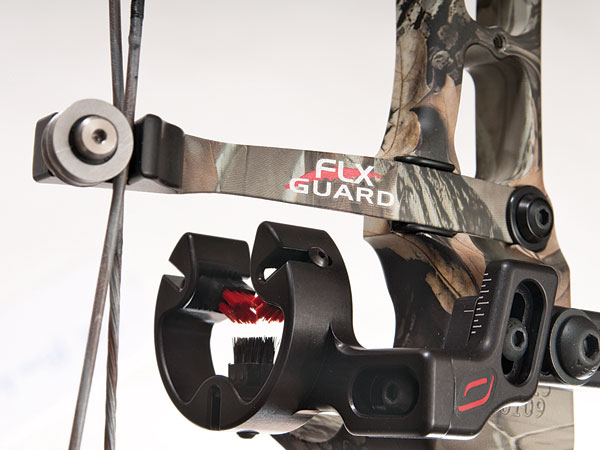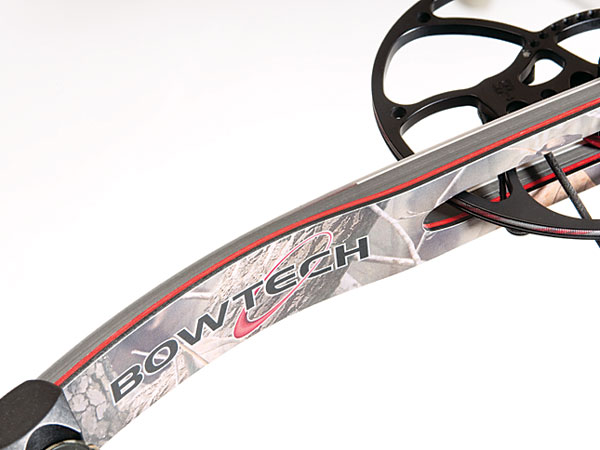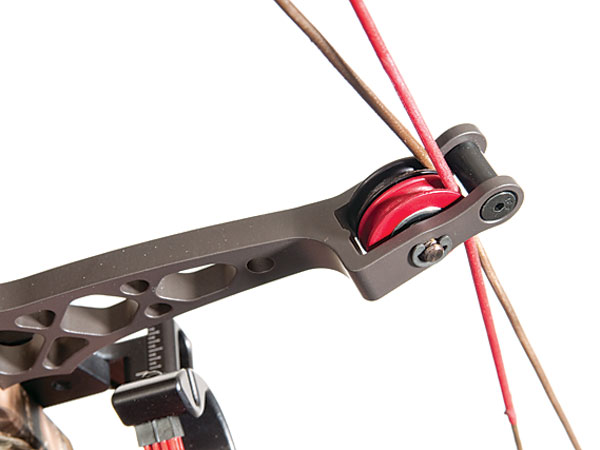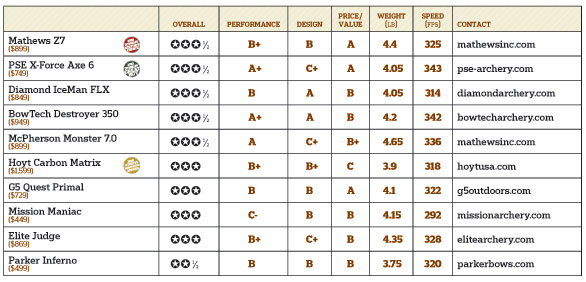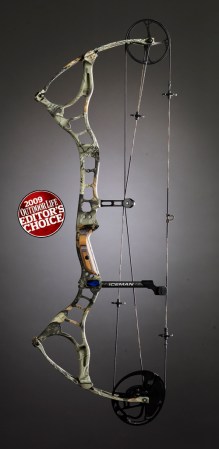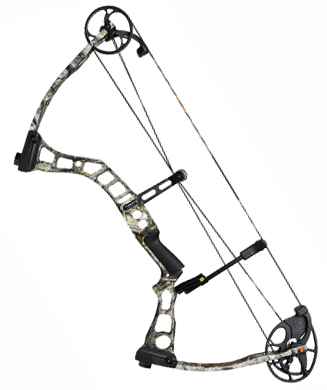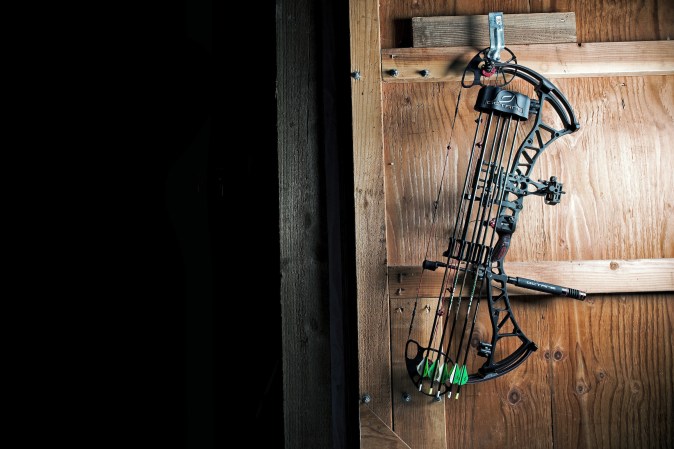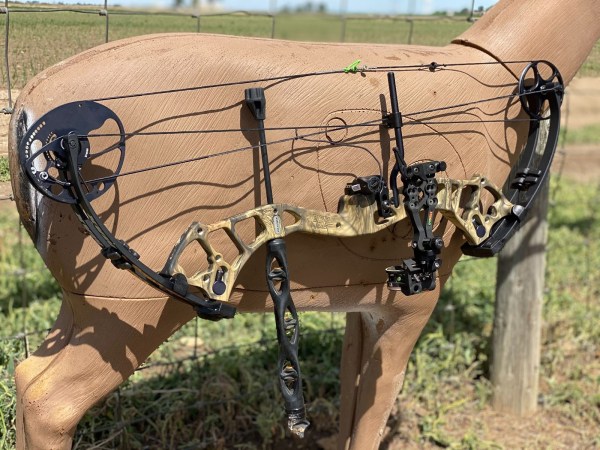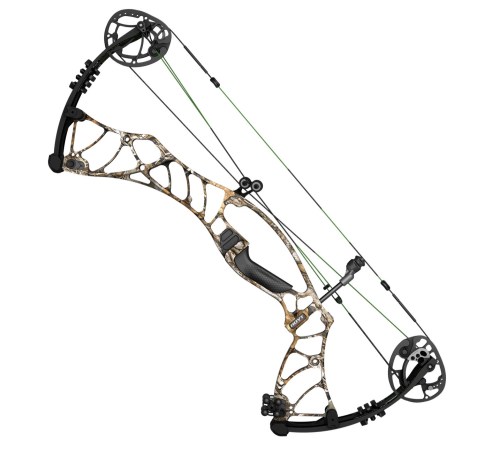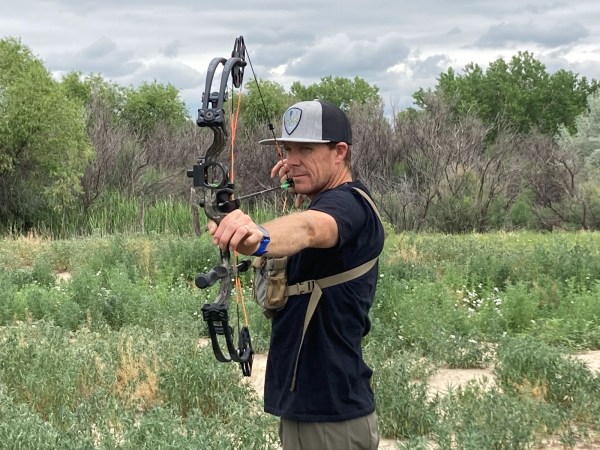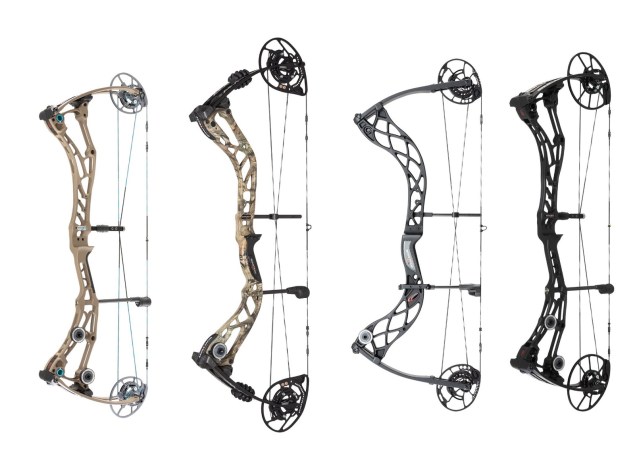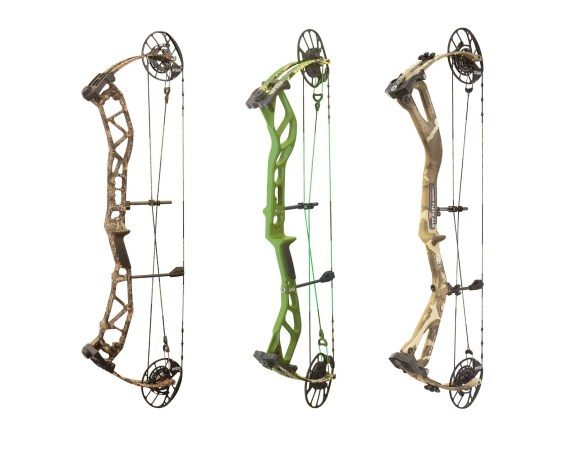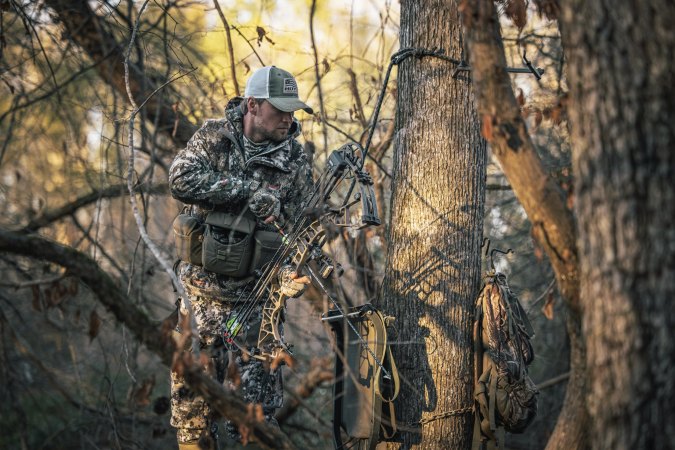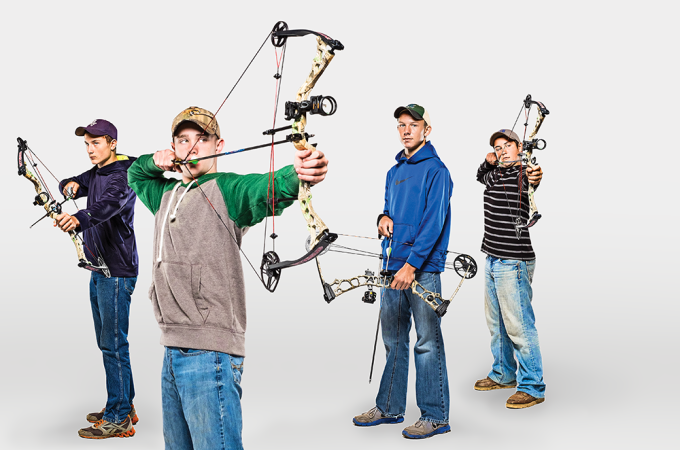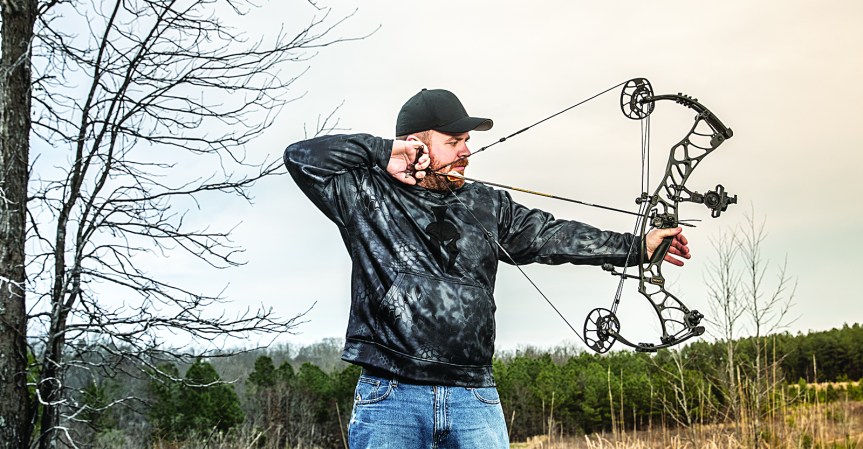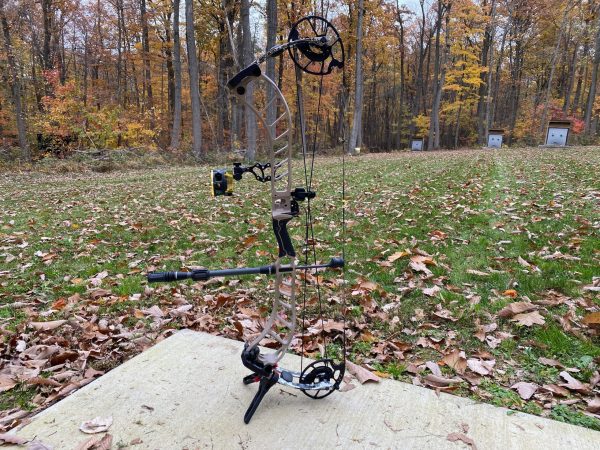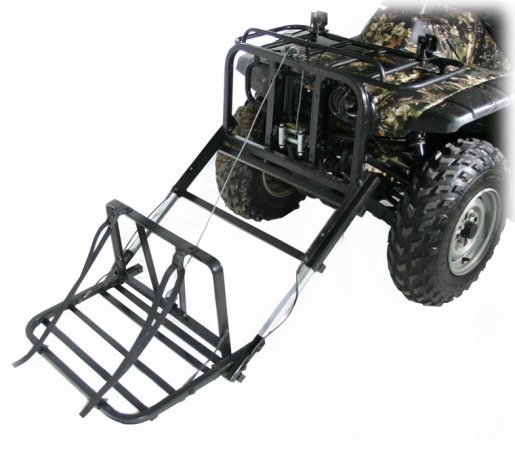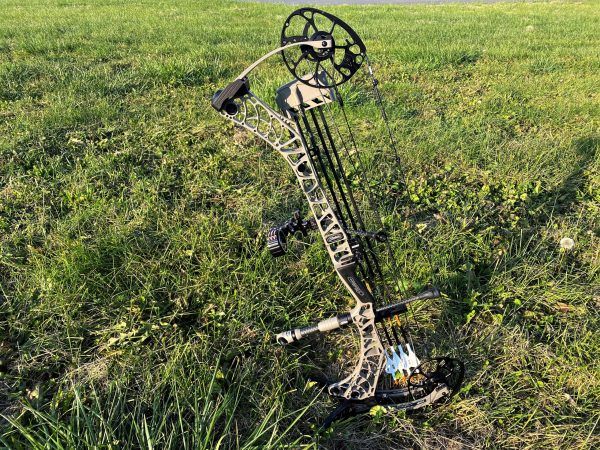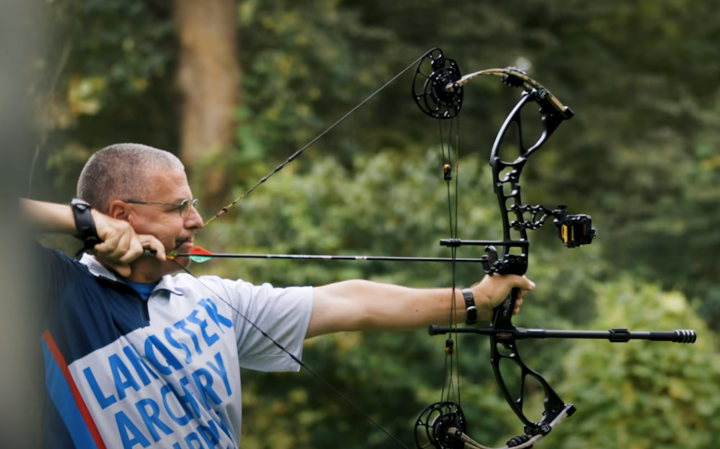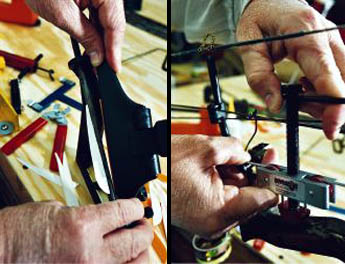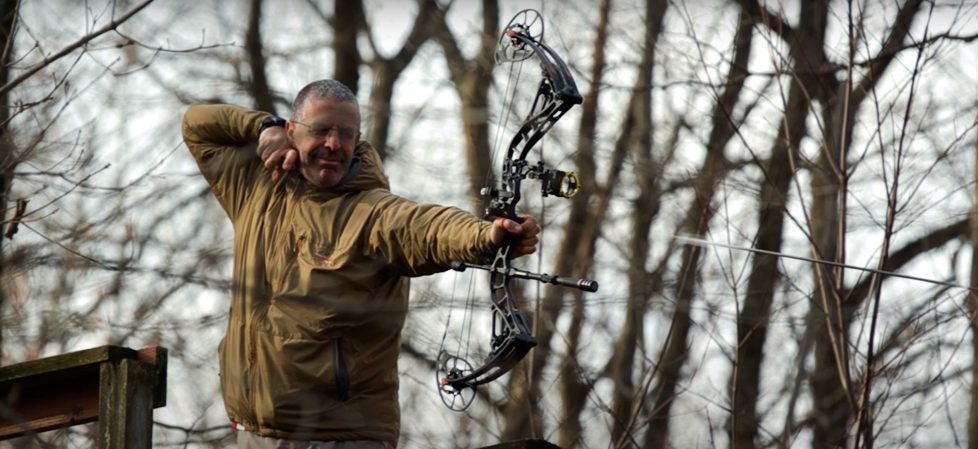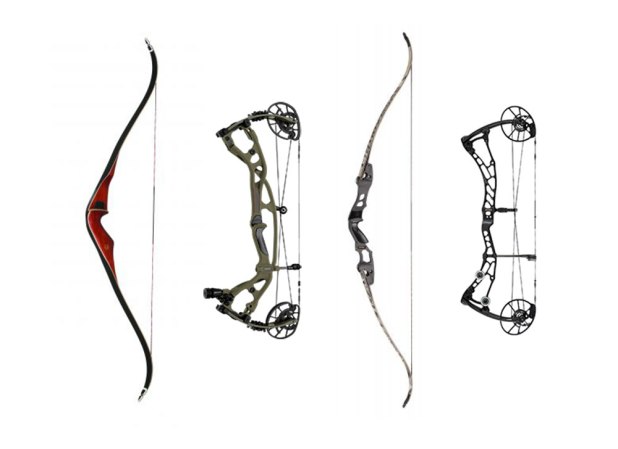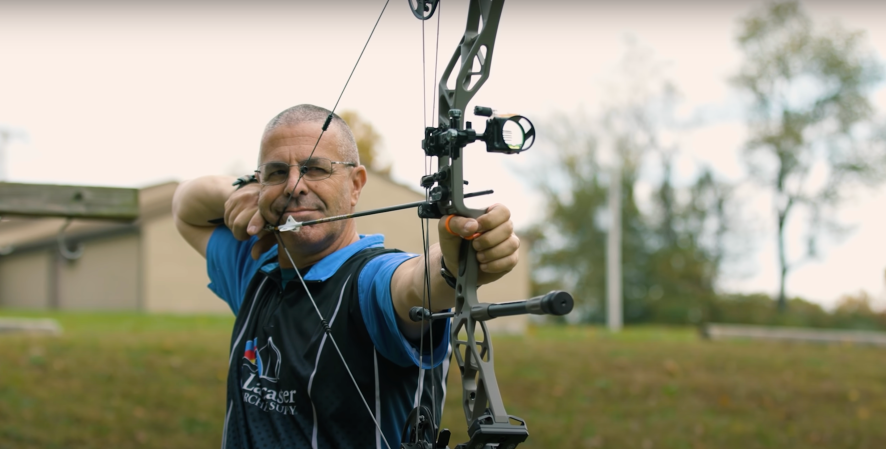We may earn revenue from the products available on this page and participate in affiliate programs. Learn More ›
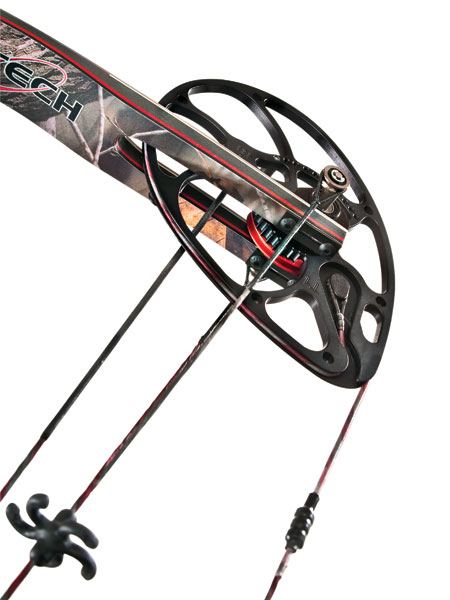

Dr. Todd Kuhn: ( Left ) OL's Bowhunting Editor holds a doctorate in environmental engineering. He's been bowhunting for more than 40 years. Chad "Moose" Whitmoyer: ( Middle Top )Whitmoyer is the lead "Techxpert" at Lancaster Archery Supply, and is arguably the nation's top bow technician. Larry Kaye: ( Top Right ) An avid archer with more than 30 years of bowhunting and competitive archery to his credit. Gus Edwards: ( Middle Bottom ) Owns and operates Autumn Sky Outfitters in Street, Maryland. He is considered the top bow technician on the East Coast. Rob Kaufhold: ( Bottom Right ) The founder and president of Lancaster Archery Supply. Kaufhold has competed internationally on the U.S. and World teams and is a former All-American archer at James Madison University. Where We Tested
Lancaster Archery Supply is an industry-leading archery distributor and pro shop located in Lancaster, Pennsylvania. LAS, opened in 1983, stocks literally hundreds of thousands of products. With more than 35,000 square feet, it's the world's largest archery retailer. LAS offers a technical hotline (800-829-7408) and e-mail support (custserv@lancasterarchery.com), through which customers can communicate with one of LAS's "Techxperts" about any archery-equipment-related topic.
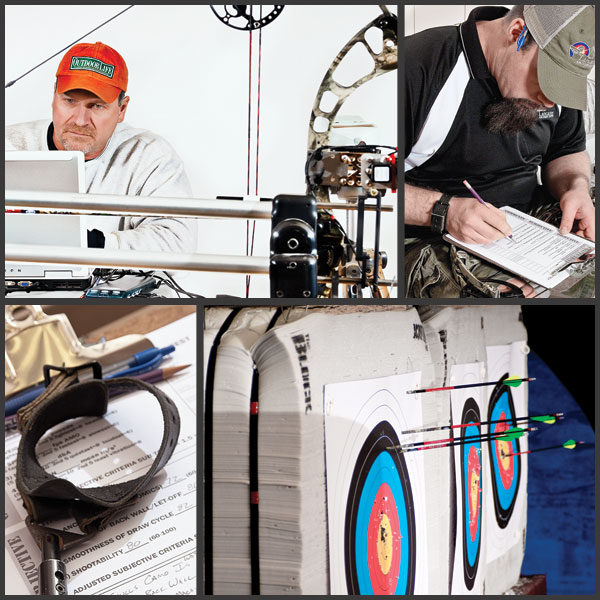
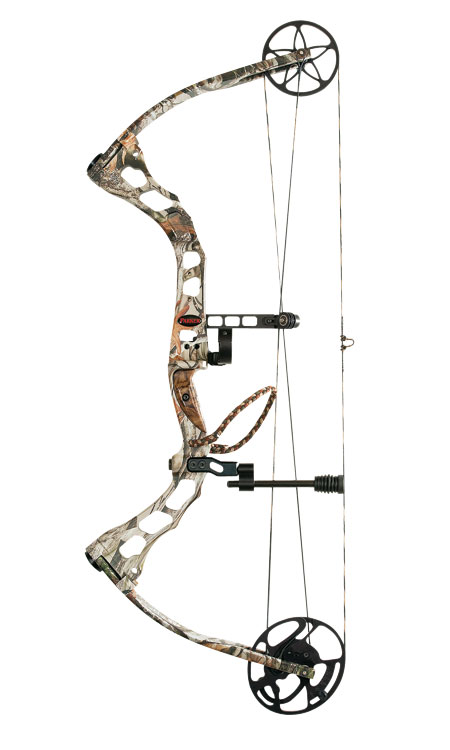
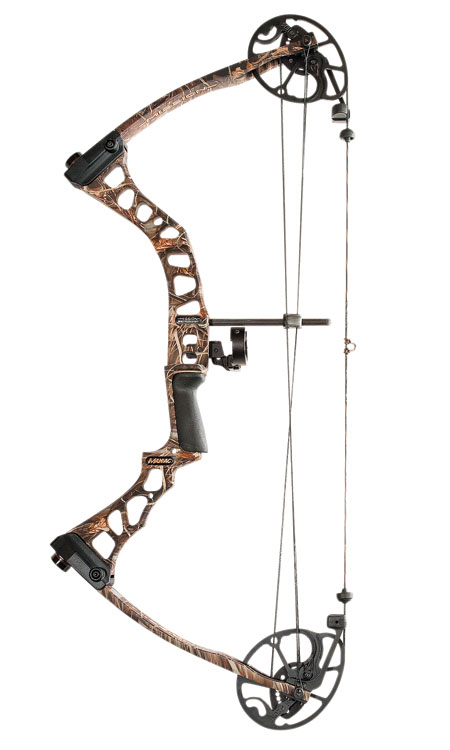
Performance: C-
Design: B
Price / Value: B Weight: 4.15 lb.
Speed: 292 fps
Noise: 81.5 dBA
Vibration: 48.31 m/s² Hits: The Maniac is outfitted with parallel limbs, a fully machined riser, string silencers, string suppressors and a Zebra Hybrid string. It's compact at 31 inches axle-to-axle, and has a wide 7 1⁄4-inch brace height. It's a versatile bow, well suited for a range of archers, from beginner to intermediate. The draw length is adjustable from 22 to 30 inches, draw weights range from 20 to 70 pounds, and the let-off is adjustable up to 77 percent. The Maniac was the quietest bow in the field, and its draw cycle is smooth and predictable, ideal characteristics for a beginner's bow. Misses: Heavy for smaller archers. Bottom Line: A good choice for growing hunters seeking high-end features in an econo-compound. Price: $449; [ missionarchery.com ]
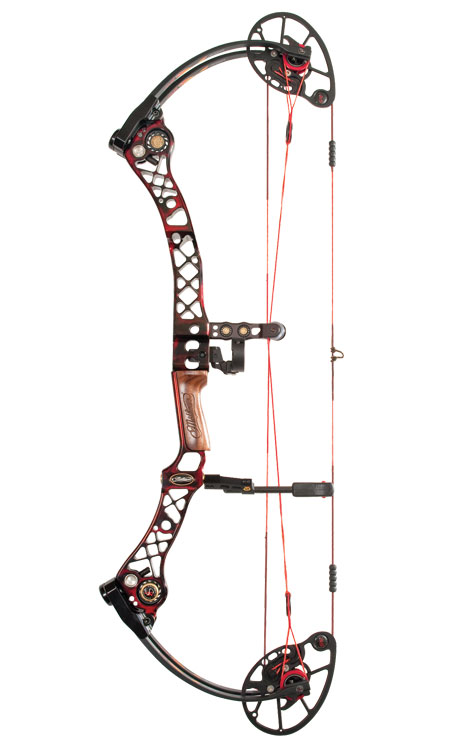
Performance: A
Design: C+
Price / Value: B+ Weight: 4.65 lb.
Speed: 336 fps
Noise: 84.6 dBA
Vibration: 74.22 m/s² Hits: The 33 1⁄2-inch-long Monster has a liberal 7-inch brace height coupled with an 80 percent let-off. Power is applied by the Advanced Vectoring System, billed as the most efficient dual-cam system in the world. We found the Monster a pleasure to shoot, and its cavernous brace height is very forgiving of user error. The Grid Lock riser design has eye appeal while adding rigidity with its cross-bracing effect. The bow is available in 25- to 30-inch draw lengths (including half-sizes) and 40- to 80-pound draw weights. Misses: This Monster snarls a bit, with 74.22 m/s2 of vibration. Bottom Line: Combines blazing speed and precise shootability into a highly refined and finely crafted machine. Price: $899; [ mathewsinc.com ]
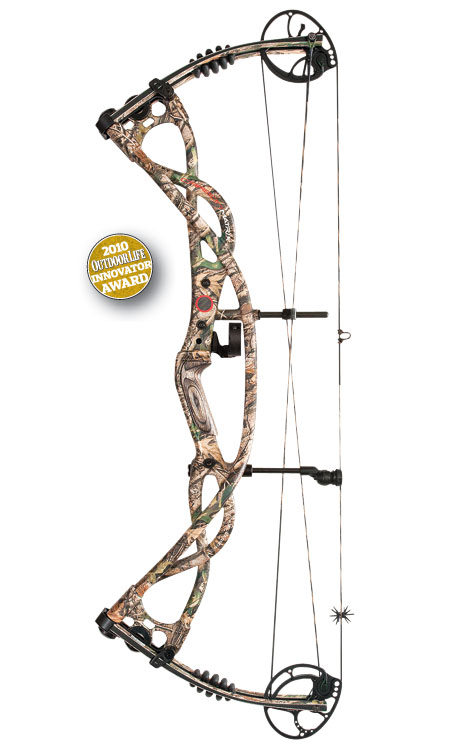
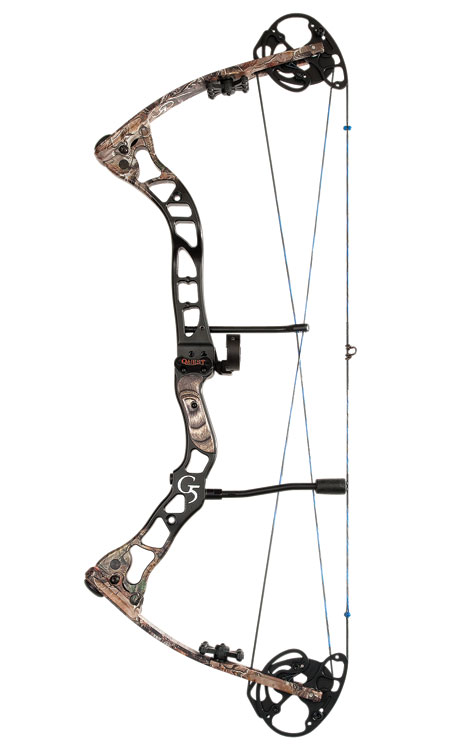
Performance: B
Design: B
Price / Value: A Weight: 4.1 lb.
Speed: 322 fps
Noise: 87 dBA
Vibration: 82.38 m/s² Hits: At 32 inches axle-to-axle, this is a tightly wrapped, no-nonsense performer with a module-based twin-cam system under the hood. The stark simplicity of the I-Glide cable guard will impress. Two glazed ceramic inserts replace the well-traveled cable wheels and plastic slides, in an effort to increase arrow speed and minimize cable wear. Two blue speed studs (30 grains apiece) are installed on the string for micro-tuning the peep sight. A giant 7 1⁄8-inch brace height elevates accuracy; the bow handles like it's on rails. Misses: A short valley abruptly transfers into the back wall. Bottom Line: This bow performs like a 1960s muscle car, yet handles like a European sports car. Price: $729; [ g5outdoors.com ]
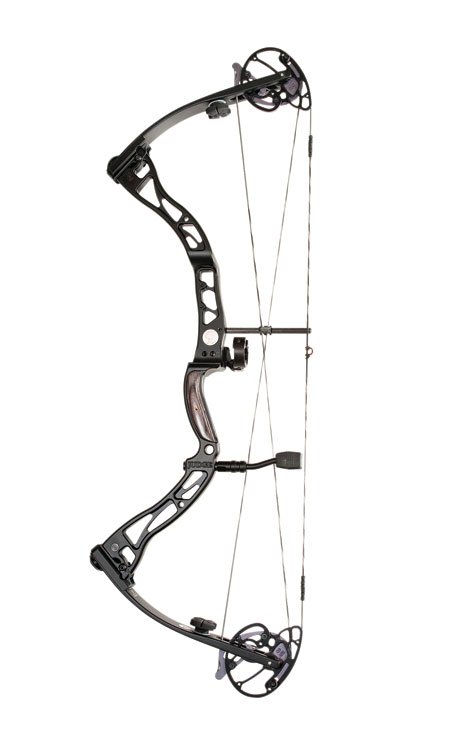
Performance: B+
Design: C+
Price / Value: B Weight: 4.35 lb.
Speed: 328 fps
Noise: 87.3 dBA
Vibration: 79.13 m/s² Hits: Attention to detail is exhibited in every square inch of the Judge, and components fit with exacting tolerance. The two-piece side-plate grip is great, and the bow nestles precisely in hand. The back wall was by far the crispest any of our testers have ever felt. At 34 7⁄8 inches, the Judge is a relatively long bow. An abbreviated 6 1⁄8-inch brace height is to be expected, given the Judge's speed. A modular two-track cam system is standard equipment. It's straightforward and designed to optimize arrow speeds at any draw length. Misses: The draw cycle is quite stout. Bottom Line: An exceptional bow from a small manufacturer whom we should be hearing much more from in the future. Price: $869; [ elitearchery.com ]
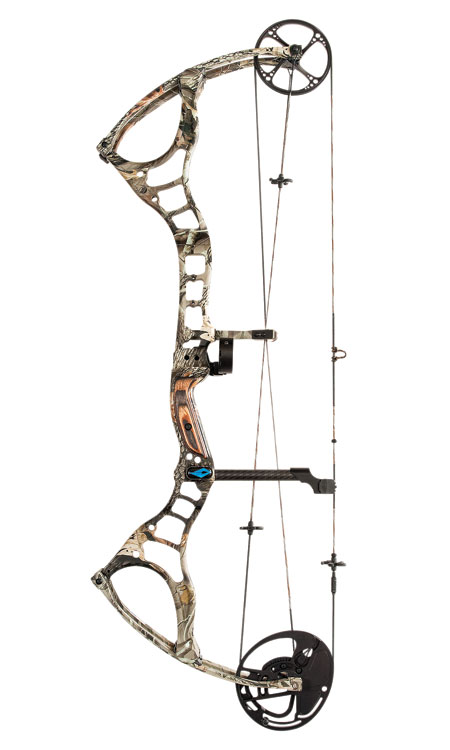
Performance: B
Design: A
Price / Value: B Weight: 4.05 lb.
Speed: 314 fps
Noise: 83.4 dBA
Vibration: 46.1 m/s² Hits: This freshly massaged version of last year's Editor's Choice features the unique FLX-Guard cable guard, which helps manage torque (see sidebar, page 54). As the bow is drawn, the composite cable guard flexes inward to minimize the amount of torque transferred to the riser and ultimately to the arrow. The draw cycle is very smooth, in part because of the solo-cam design. The 7-inch brace height delivers tack-driving accuracy, while the 31 1⁄2-inch axle-to-axle length is compact and maneuverable. Misses: At 314 fps, it's somewhat lethargic; we'd like to see another 10 fps out of a bow with this price tag. Bottom Line: The IceMan FLX was a pure shooter right out of the box. Price: $849; [ diamondarchery.com ]
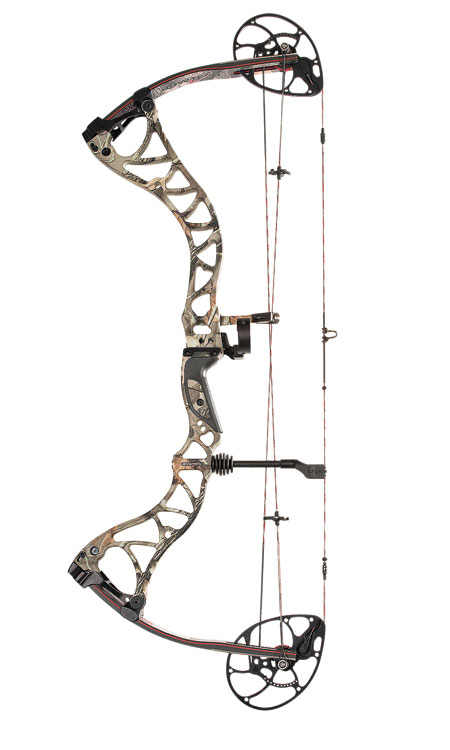
Performance: A+
Design: A
Price / Value: B Weight: 4.2 lb.
Speed: 342 fps
Noise: 86.6 dBA
Vibration: 42.88 m/s² Hits: New limbs are at the heart of BowTech's newest flagship. The high-modulus limbs have carbon cores, advertised as lighter than traditional limbs and with unique energy-storing capabilities. Aluminum inserts are said to stiffen the limb tips, and limit cam lean. The bow tapes 32 3⁄8 inches axle-to-axle, but shoots like a much longer bow. Its balance is just right, and the 6-inch brace height is manageable. This bow is scary fast, with a draw cycle that, while stiff, should please pure speed freaks. Misses: The limbs have sharp edges, and the injection-molded handle might get slick in cold weather. Bottom Line: The Destroyer is a turbo-charged, shock-free shooter. Price: $949; [ bowtecharchery.com ]
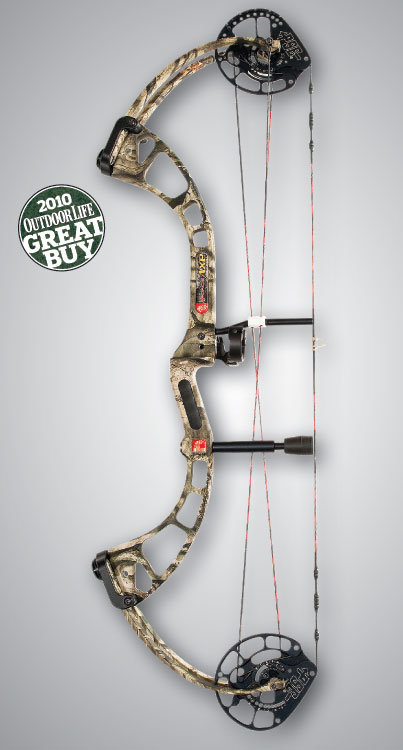
Performance: A+
Design: C+
Price / Value: A Weight: 4.05 lb.
Speed: 343 fps
Noise: 83.7 dBA
Vibration: 85.51 m/s² Hits: The Axe 6 shares DNA with its predecessors built on the X-Force chassis. The highly adjustable Axe Inner Cam offers 6 inches of draw-length adjustment without a module change. Soft, almost malleable side grip plates are an ergonomic treat. Add the best balance of the test group, and you have as fine a precision shooting instrument as you'll find. Misses: The late-1980s-era cable guard and slide are in desperate need of a makeover. Bottom Line: The Axe 6 delivers more speed, smoothness and shootability than bows that cost $200 more. Price: $749; [ pse-archery.com ]
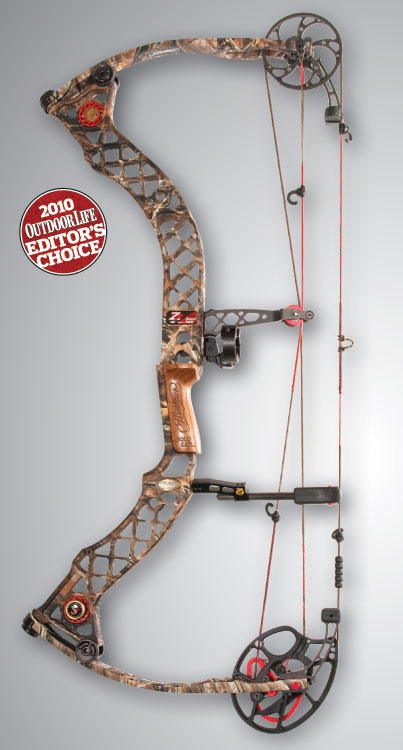
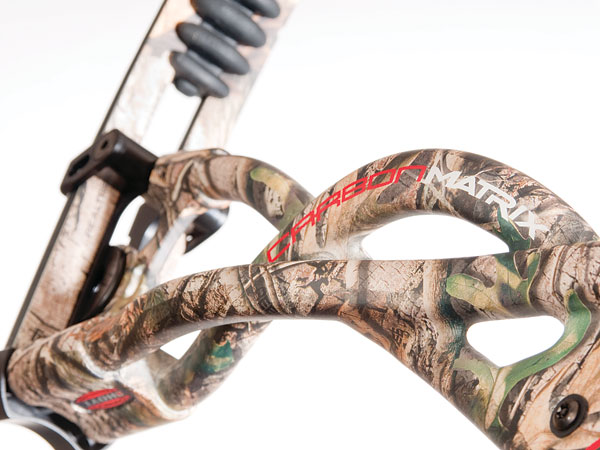
Four advancements in compound bow construction that will change the way new bows are made Hoyt O-Tech Carbon Riser: While manufacturers have tried to construct a dependable carbon riser for years, none have succeeded–until now. Representing a significant advance in engineering, strategically fashioned hollow carbon tubes yield new standards in design. At 35 inches axle-to-axle, this riser delivers all the stability of a longer bow, but with the weight of one much shorter.
